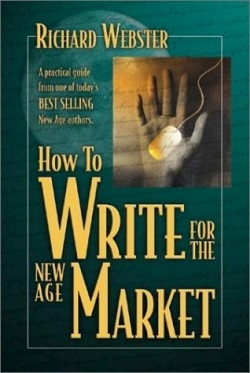How To Write For the New Age Market
“ ‘New Age’ is a convenient term,“ writes the author, “to describe the rapid growth of mystical and psychic awareness that spread around the world in the late 1960s and has continued to grow, expand, and develop ever since.” This book targets the aspiring New Age writer who would like to produce a well-written nonfiction book and get it published in a genre that covers diverse subjects. Limiting this book to the New Age audience, however, would be a disservice. It contains plenty of practical material for any writer who has “ambition, love of the subject, and the willingness to write, write, write.”
The author has familiarity with territories unknown to unpublished writers: his seven years publishing gave him experience in production, marketing, sales, and editing. He conducts motivational seminars called “Wake Up And Write,” and has published Astral Travel for Beginners and Write Your Own Magic, among his twenty-five books on subjects such as aura reading, candle magic, feng shui, past-life memories, and pendulum magic.
“The craft of writing can be taught-the art of writing can not,” Webster asserts. He argues that it is not possible to teach someone to write great literature, but it is possible to teach how to communicate effectively with words on paper.
Webster presents a clearly defined formula for writing and publishing, but cautions that, before beginning to write, an author must first choose a topic, identify a need for the book, pick a publisher and a target audience, and understand why he or she is writing at all.
After exploring these questions, Webster offers a step-by-step process for writing and publishing: getting started, outlining, researching, writing, revising, choosing a publisher, preparing a submission package, managing and developing contracts, and selling the finished product. He suggests helpful techniques for creating an outline, which he considers essential, using a stack of file cards with chapter headings listed on each one. Information and ideas are recorded on the cards and used later for the organization process. His brief grammar review is sound without being insulting.
Webster confides little-known secrets such as: “Publishers are more likely to publish a New Age nonfiction by an unknown author than a novel by the same person. Nonfiction usually sells better than fiction and continues selling. Finally, in difficult times, people buy more nonfiction than fiction.”
A writer’s relationship with an editor may directly affect what goes on inside the publisher’s office. Choose your publisher before you write anything, Webster advises, and give them what they want. The publishing process is just as important as completing a book.
From selecting a subject to conducting promotional tours, this successful author shares his experience in writing and publishing, with a specific eye towards what is wanted in the market for New Age subjects. The layout of this book makes it easy for quick referral. The information frees the writer’s creative energies for the art by having the craft so deftly outlined.
Reviewed by
Carol Navarro
Disclosure: This article is not an endorsement, but a review. The publisher of this book provided free copies of the book to have their book reviewed by a professional reviewer. No fee was paid by the publisher for this review. Foreword Reviews only recommends books that we love. Foreword Magazine, Inc. is disclosing this in accordance with the Federal Trade Commission’s 16 CFR, Part 255.

